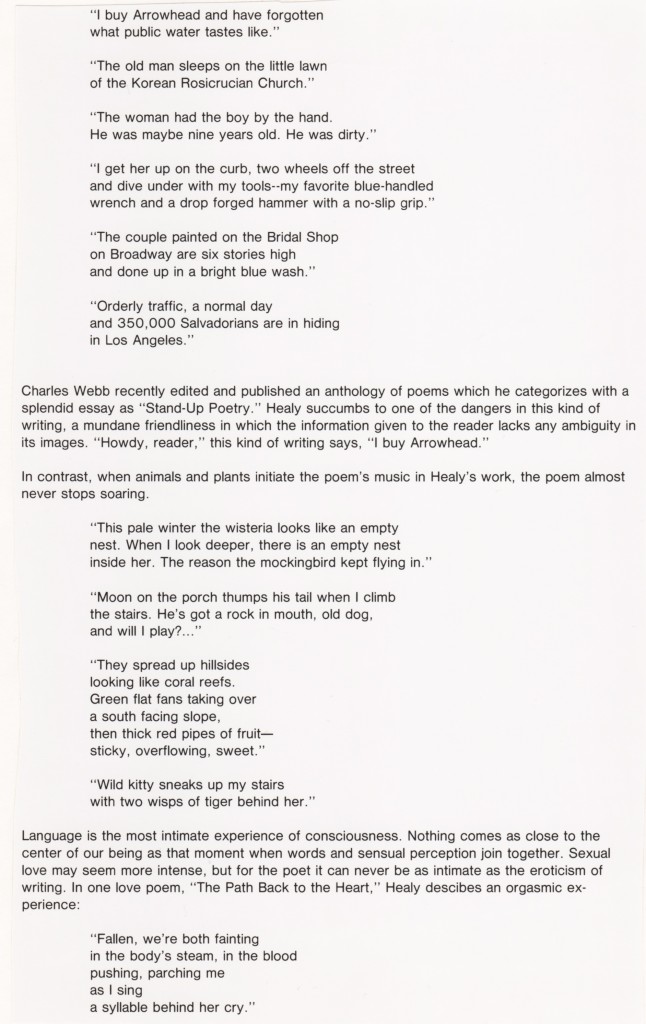I first heard Eloise Klein Healy read her poetry at Immaculate Heart College, a Catholic college in Los Angeles that unflinchingly challenged the patriarchal hierarchy of that religion during the late 1960s. By the time I got to the campus around 1973 or 1974 to hear her read with Michael C. Ford, the nuns who taught there had already declared themselves to be free of the local bishop’s heavy hand. As a poet, Healy too was seeking alternative models of writing. At Immaculate Heart, Healy read a mix of poems, several of which were memorable enough on first hearing that I recognized them immediately when they appeared in her first collection, Building Some Changes (Beyond Baroque New Book, 1976). I included her in my first anthology, The Streets Inside: Ten Los Angeles Poets (Momentum Press, 1978), alongside Holly Prado, Deena Metzger, Kate Braverman, Jim Krusoe, Lee Hickman, and Harry E. Northup. Her poems have subsequently appeared in over a dozen anthologies, including Edward Field’s mass-market paperback, A Geography of Poets. Healy went on to devote a considerable amount of time to the Woman’s Building, all the while teaching at a variety of settings, including California State University, Northridge. In 2012, the Cultural Affairs Department of the City of Los Angeles selected her to serve as the first Poet Laureate of L.A.
Healy was among the small cluster of poets in Los Angeles who managed to be featured both in the Stand Up poetry anthologies edited by Charles Webb and to be part of the roster of Spoken Word performers recorded by New Alliance Records for which Harvey Kubernik served as producer.
You can find a selection of twenty poems from her books at:
http://www.eloisekleinhealy.com/read.html
Almost a quarter-century ago, I wrote a review of her collection, ARTEMIS IN ECHO PARK, that never found an editor willing to publish it. By the time I wrote this review, she had also appeared in my second anthology, Poetry Loves Poetry. I should emphasize that my comments on her poetry probably reflect my impatience with my own inability to bring a more lyrical touch to my poems than a dissatisfaction with her Healy’s verse. I present my review, though, without rewriting it. I would add only that her work has continued to mature, in the 20 years since I wrote this brief essay, both in its “ordinary wisdom” and in its formal dexterity. Her sestina, “Louganis,” which I first heard her read at the Idyllwild Poetry Festival, is memorable enough to make the task of memorizing it not anywhere near as daunting a task as learning to dive from a high board. It’s a 10, though it’s not the first time her poems have earned that mark.



 About Bill Mohr
About Bill Mohr